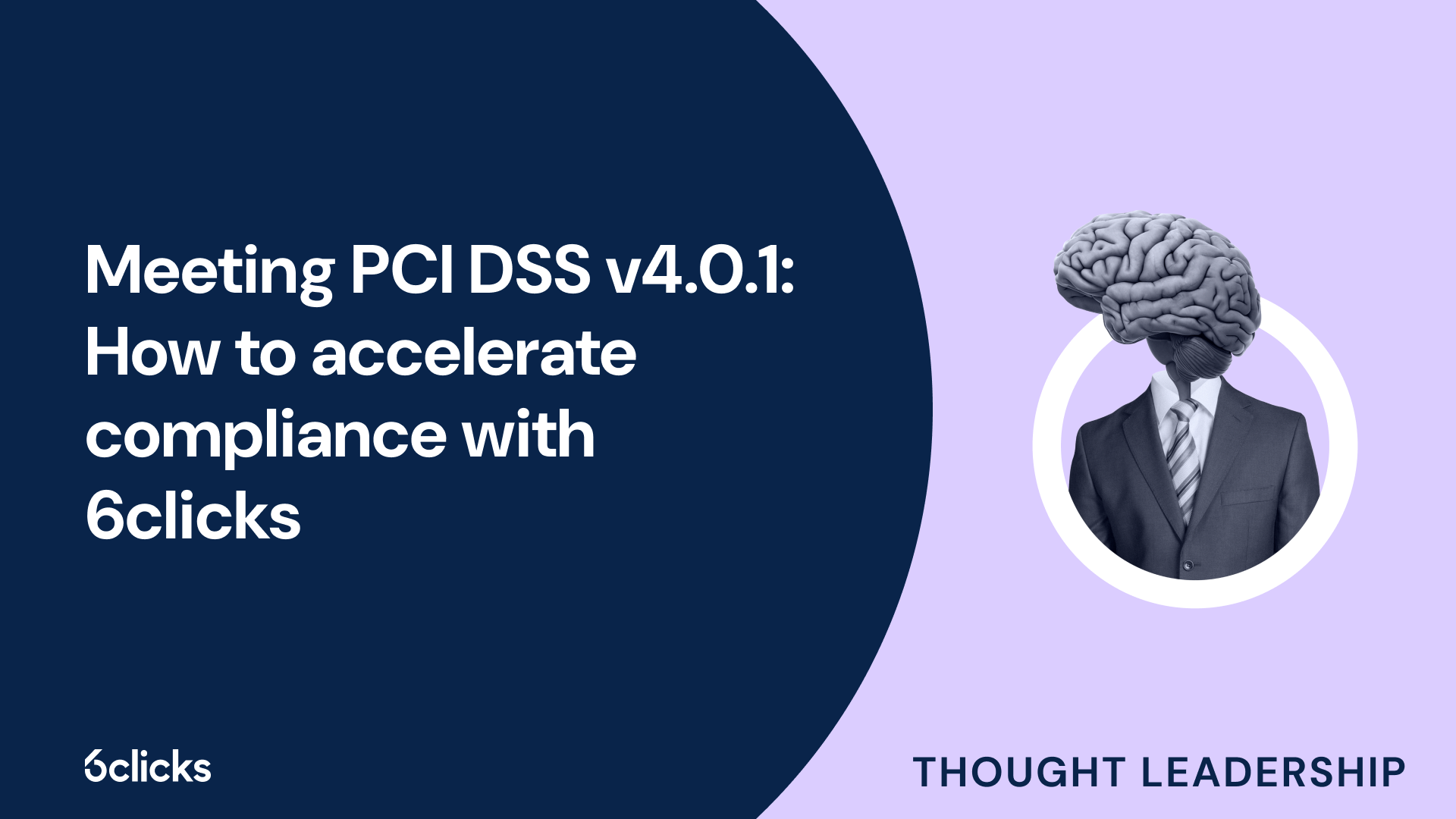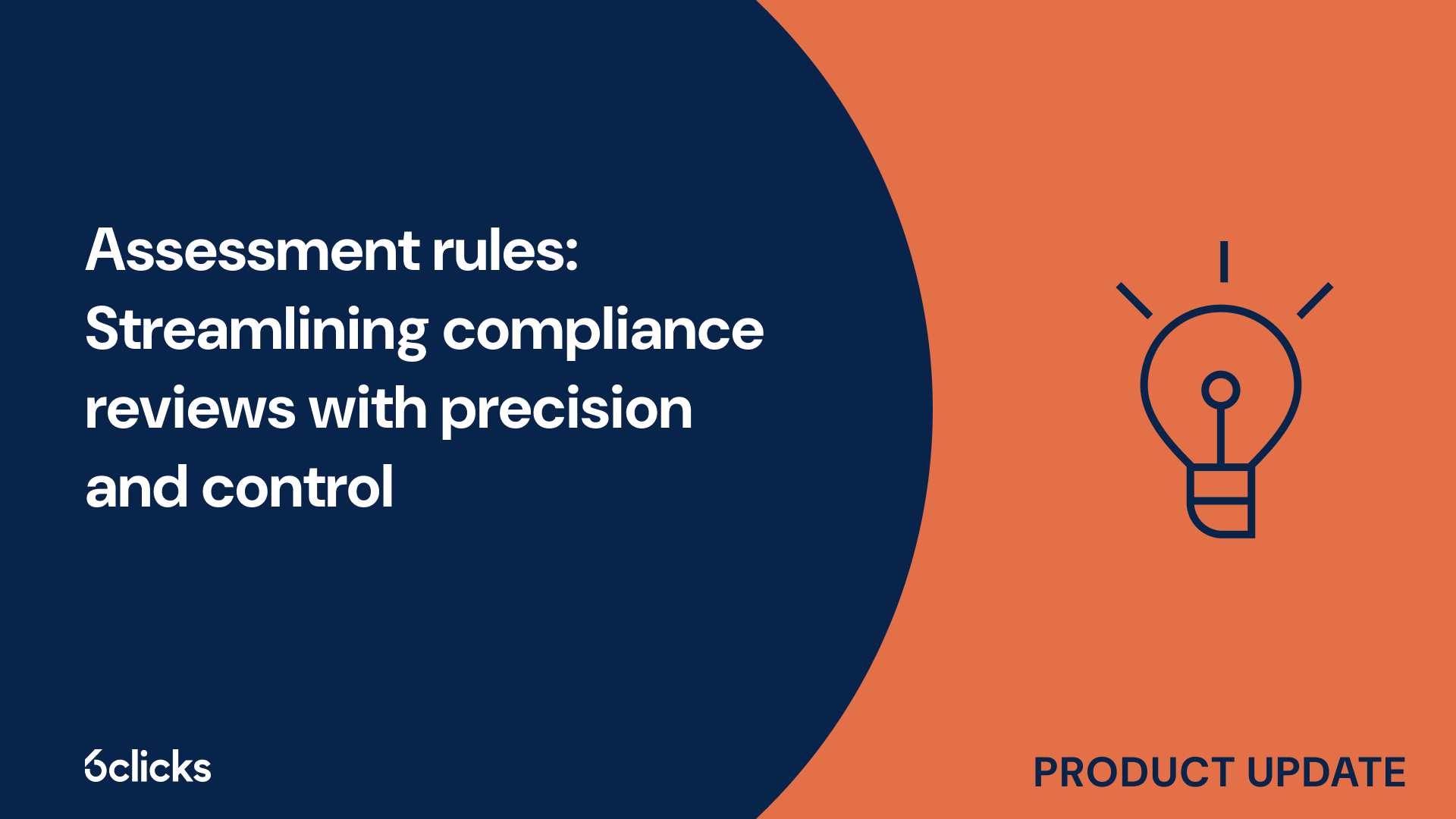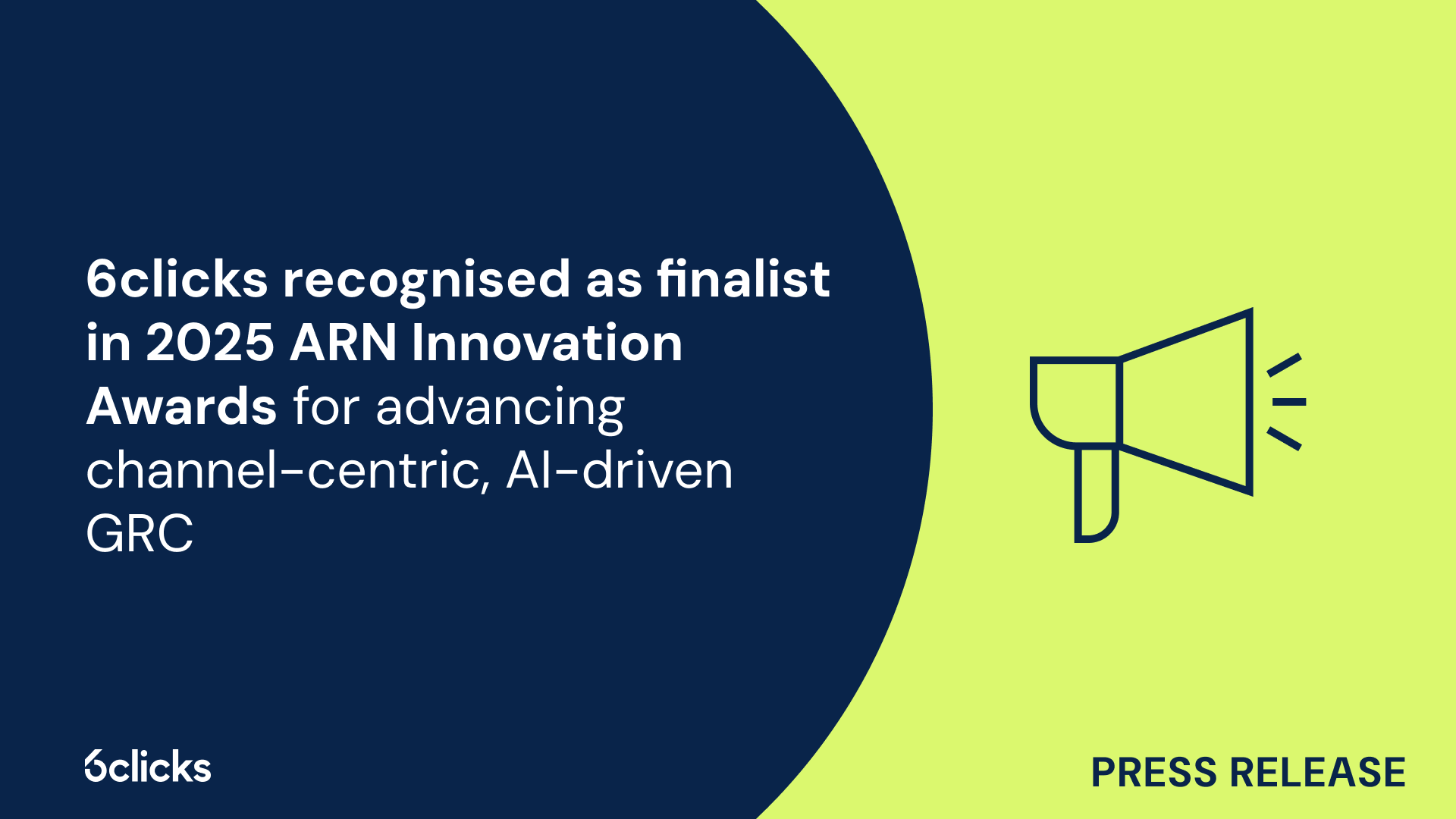The GRC buyer’s guide for 2025: Building resilience with AI-powered, federated solutions
Discover the ultimate GRC buyer's guide for 2025! Uncover how AI-powered, federated solutions transform compliance and security management for industries like government, aerospace, banking, and more. Learn about centralized control, continuous compliance, and advanced cyber GRC capabilities. Download now!
-1.png?width=200&height=249&name=Group%20193%20(1)-1.png)
The GRC buyer’s guide for 2025: Building resilience with AI-powered, federated solutions
What is HITRUST?
HITRUST, which stands for Health Information Trust Alliance, is a non-profit organization that has established itself as the gold standard in the healthcare industry for ensuring information security and privacy. With its Common Security Framework (CSF), HITRUST provides a certifiable framework that helps healthcare organizations and their business associates comply with the complex regulatory requirements of the industry. The CSF incorporates various industry standards and regulatory factors to develop a standardized framework that facilitates an integrated approach to risk management and compliance. HITRUST's rigorous process includes a thorough risk assessment, implementation of necessary security controls, and ongoing monitoring to ensure that organizations maintain the highest level of security and protection against potential threats. HITRUST's MyCSF tool aids organizations in performing readiness assessments and achieving the necessary degree of compliance. By adhering to HITRUST's security standards, healthcare companies can establish a robust security program and safeguard personal health information from security breaches.
What does HITRUST stand for?
HITRUST stands for Health Information Trust Alliance. Established in 2007, HITRUST is a non-profit organization that aims to improve the security and privacy of sensitive health information within the healthcare industry.
One of HITRUST's main accomplishments is the creation of the Common Security Framework (CSF), a certifiable framework that combines multiple security requirements and industry standards into one comprehensive framework. This framework helps healthcare organizations and their business associates navigate the complex regulatory requirements and compliance program.
HITRUST's CSF provides a standardized approach for healthcare companies to assess their risk profiles, identify security measures, and implement controls to protect personal health data. It offers a rigorous process for certification, acting as the gold standard for data security in the healthcare industry.
By utilizing the CSF and undergoing the certification process, healthcare organizations can ensure compliance with regulatory factors while enhancing their overall security posture. HITRUST's integrated approach to data security and risk management helps protect against security breaches and facilitates the safe use of mobile devices and other technology in the healthcare setting.
Overview of the HITRUST common security framework (CSF)
The HITRUST Common Security Framework (CSF) is a certifiable framework that plays a crucial role in the healthcare industry. By combining multiple security requirements and industry standards into one comprehensive framework, the CSF provides healthcare organizations and their business associates with a clear roadmap to navigate the complex regulatory requirements and compliance program. It offers a standardized approach for healthcare companies to assess their risk profiles, identify necessary security measures, and implement effective controls to protect personal health data. The CSF's rigorous certification process acts as the gold standard for data security in the healthcare industry, helping organizations enhance their overall security posture while ensuring compliance with regulatory factors. Through the CSF, HITRUST facilitates an integrated approach to data security and risk management, protecting against security breaches and empowering healthcare companies to safely leverage mobile devices and other technologies. The CSF is an essential tool for healthcare organizations looking to meet their compliance requirements while safeguarding sensitive patient information.
Benefits of using the HITRUST CSF
The HITRUST CSF (Common Security Framework) is a comprehensive and certifiable framework designed specifically for the healthcare industry. It streamlines and simplifies the certification process, ensuring that healthcare organizations meet all regulatory requirements and adhere to the highest security standards.
Using the HITRUST CSF provides several key benefits for healthcare organizations. Firstly, it significantly improves data security. By implementing the comprehensive set of security controls outlined in the framework, organizations can mitigate a wide range of security risks and protect sensitive patient information from potential breaches.
Secondly, the HITRUST CSF helps healthcare organizations meet the complex compliance requirements of the industry. It provides a standardized framework that integrates multiple regulatory factors, enabling organizations to demonstrate compliance with various regulations such as HIPAA, HITECH, and others.
Furthermore, adopting the HITRUST CSF helps organizations build a burnished reputation in terms of security and compliance. With the increasing number of security breaches in the healthcare industry, patients and partners are becoming more concerned about data protection. By achieving and maintaining HITRUST CSF certification, organizations can demonstrate their commitment to safeguarding personal health information and enhance their overall reputation.
In addition, HITRUST CSF certification provides a competitive advantage in the healthcare industry. Organizations that have successfully completed the rigorous certification process can differentiate themselves from competitors and attract more customers, business associates, and investors who prioritize data security and compliance.
Lastly, utilizing the HITRUST CSF can lead to significant cost savings in the long run. By implementing a comprehensive and integrated approach to security and compliance, organizations can avoid potential fines, legal liabilities, and reputational damages resulting from security breaches. Additionally, the HITRUST CSF provides organizations with the tools and guidance needed to efficiently manage security risks, which can ultimately reduce the financial impact of potential incidents.
Components of the CSF
The HITRUST CSF, or the Health Information Trust Alliance Common Security Framework, is a comprehensive and standardized framework designed to address the security and compliance needs of the healthcare industry. It consists of several components that healthcare organizations can utilize to enhance their security and compliance posture.
One of the key components of the HITRUST CSF is the documentation required for certification and assessment. This includes policies, procedures, standards, and guidelines that organizations must develop and implement to meet the security and compliance requirements. These documents help in demonstrating the organization's commitment to data protection and regulatory compliance.
Another component of the HITRUST CSF is the assessment process, which evaluates the organization's implementation of the framework's controls. This involves conducting a thorough risk assessment and identifying gaps in the organization's security measures. The assessment process includes various levels, such as i1 (interim), readiness assessment, and certification assessment. Organizations must meet the requirements and pass the assessment to achieve HITRUST CSF certification.
The HITRUST CSF also includes specific control objectives and requirements tailored to the healthcare industry. These requirements address various aspects of information security, including access control, risk management, incident response, and mobile device security. By implementing these controls, healthcare organizations can enhance their security posture and ensure the protection of sensitive patient information.
To assist organizations in achieving HITRUST CSF compliance, there are several tools and resources available. The MyCSF tool provided by HITRUST serves as a centralized platform for organizations to manage their certification and assessment process. It provides guidance, templates, and best practices to help organizations develop the necessary documentation and meet the compliance requirements. Additionally, HITRUST offers training programs, webinars, and support from experts to assist organizations throughout their compliance journey.
How the CSF is used in healthcare organizations
The HITRUST CSF (Health Information Trust Alliance Common Security Framework) is widely utilized by healthcare organizations to assess and manage security risks. This comprehensive framework helps healthcare organizations meet regulatory requirements and develop a robust compliance program.
Healthcare organizations leverage the HITRUST CSF to assess their current security posture and identify vulnerabilities. By conducting a thorough risk assessment, organizations can identify potential threats and vulnerabilities, enabling them to prioritize and implement appropriate security controls. The CSF provides a standardized framework for organizations to reference and implement the necessary security measures, ensuring a comprehensive and integrated approach to risk management.
The HITRUST CSF also plays a crucial role in helping organizations meet regulatory requirements. The framework incorporates various regulatory factors, ensuring organizations address the specific compliance requirements of the healthcare industry. By implementing the CSF's control objectives and requirements, healthcare organizations can establish a strong compliance program and demonstrate their commitment to protecting personal health information.
Furthermore, the HITRUST CSF enables organizations to develop a comprehensive compliance program by providing guidance and best practices. It offers templates and resources to help organizations develop the required documentation, policies, and procedures. The MyCSF tool, provided by HITRUST, serves as a centralized platform for organizations to manage their certification and assessment process, streamlining compliance efforts.
Certification process for achieving HITRUST compliance
The certification process for achieving HITRUST compliance is a rigorous and comprehensive endeavor that helps healthcare organizations meet the industry's security and regulatory requirements. HITRUST, which stands for Health Information Trust Alliance, is a nonprofit organization that has developed the HITRUST CSF (Common Security Framework) as a certifiable framework for addressing security risks and protecting sensitive health information. Healthcare organizations undergo a series of assessments and evaluations to ensure they meet the necessary control objectives and requirements set by the CSF. This certification process involves readiness assessments, interim assessments, and the i1 assessment, which assesses organizations at different levels of implementation. By achieving HITRUST certification, healthcare organizations can demonstrate their commitment to maintaining a strong security posture and effectively managing risks to protect personal health information.
Understanding regulatory requirements
Achieving compliance with HITRUST, the Health Information Trust Alliance, is a crucial step for healthcare organizations in safeguarding sensitive data and minimizing data security risks. To understand the regulatory requirements associated with HITRUST certification, healthcare organizations must first comprehend the key rules established by the Health Insurance Portability and Accountability Act (HIPAA).
HIPAA consists of two primary rules: the HIPAA Privacy Rule and the HIPAA Security Rule. The Privacy Rule governs the use and disclosure of individuals' protected health information (PHI), while the Security Rule outlines specific safeguards to protect the confidentiality, integrity, and availability of electronic PHI (ePHI). Complying with these rules is paramount for healthcare organizations seeking HITRUST certification.
In addition to HIPAA, the 2009 Health Information Technology for Economic and Clinical Health (HITECH) Act also plays a significant role in strengthening HIPAA compliance. The HITECH Act seeks to enhance the privacy and security of individuals' personal health information by promoting the adoption of electronic health records and enforcing stricter penalties for non-compliance.
HITRUST certification serves as a comprehensive framework that aligns with both HIPAA and HITECH requirements. It provides healthcare organizations with a standardized and certifiable framework to assess and manage their risk profiles effectively. By implementing HITRUST, organizations can establish an integrated approach to their security program, ensuring compliance with regulatory factors and industry standards.
Developing a comprehensive compliance program
Developing a comprehensive compliance program for HITRUST involves several key steps that healthcare organizations, finance organizations, and manufacturing organizations must follow. The program must be tailored to meet the specific needs of each industry while ensuring adherence to HITRUST compliance standards.
- Assess the organization's current security posture: The first step is to conduct a thorough assessment of the organization's current security measures and identify any gaps or areas that need improvement. This assessment should consider factors specific to the healthcare industry, finance industry, or manufacturing industry, such as data storage and access control.
- Establish policies and procedures: Next, develop and implement a set of policies and procedures that align with HITRUST compliance requirements and industry-specific regulations. These policies should cover areas such as employee training, risk assessment, incident response, and data breach notification.
- Implement security controls: Implement specific security controls that address the unique challenges and risks faced by the organization's industry. For example, healthcare organizations may need to implement measures to protect patient health information, while finance organizations may focus on safeguarding financial data.
- Train employees: Conduct comprehensive training programs to ensure that all employees understand their responsibilities and obligations under the compliance program. Tailor the training to the specific industry, ensuring that employees are aware of the unique risks and compliance requirements they face.
- Conduct regular assessments and audits: Regularly assess the effectiveness of the compliance program and conduct audits to identify any areas of non-compliance or potential vulnerabilities. This ongoing monitoring allows for timely remediation and continuous improvement of the program.
It is essential to understand that the process of developing a comprehensive compliance program for HITRUST will vary depending on the industry. The healthcare industry, finance industry, and manufacturing industry each have specific compliance requirements and risk profiles that must be addressed. Therefore, organizations must tailor their compliance programs to meet the unique needs of their respective industry while ensuring adherence to HITRUST standards.
Obtaining certification from the HITRUST alliance
Obtaining certification from the HITRUST alliance is a rigorous process that involves an independent assessment of a healthcare organization's compliance with the HITRUST Common Security Framework (CSF). The HITRUST CSF is a certifiable framework that incorporates various regulatory requirements and common security frameworks to establish a comprehensive security program.
The certification process begins with an in-depth assessment conducted by a HITRUST-authorized assessor. This assessment evaluates the organization's compliance with the CSF and its ability to manage and mitigate security risks. It considers factors such as access control, risk management, and protection of personal health information.
The assessment is comprehensive and can be quite complex, requiring the evaluation of numerous security controls and measures. The length of the assessment varies depending on the size and complexity of the healthcare organization but can typically take several weeks to complete.
Once the assessment is finished, the organization must undergo an additional six weeks of review by HITRUST to ensure all requirements have been met. This review includes a thorough evaluation of the assessment results and any remediation efforts undertaken by the organization.
Upon successful completion of the assessment and review process, the healthcare organization is awarded HITRUST certification. This certification serves as a testament to the organization's commitment to maintaining a robust security program and meeting industry standards for protecting sensitive health information. It provides assurance to patients, partners, and stakeholders that the organization has implemented appropriate security measures to safeguard their data.
Tools and resources available to help with HITRUST compliance
Tools and resources are available to assist healthcare organizations in achieving and maintaining HITRUST compliance. One such tool is the MyCSF (My HITRUST CSF) platform, which provides a step-by-step guidance on the certification process and helps organizations assess their current security posture. It offers a centralized hub for managing compliance documentation, tracking progress, and generating reports. Additionally, HITRUST offers various resources such as templates, whitepapers, and webinars to educate organizations about the certification requirements and help them align with the CSF. HITRUST also provides readiness assessments, which can identify gaps in compliance and help organizations prioritize remediation efforts. These tools and resources empower healthcare organizations and their business associates to navigate the complex regulatory landscape and enhance their security posture to protect sensitive health information. By leveraging these tools and resources, organizations can streamline their compliance program and ensure they meet the rigorous standards set by HITRUST.
MyCSF tool for risk assessment and management
The MyCSF tool is an important component of the HITRUST CSF certification process, designed specifically for the healthcare industry. It allows healthcare organizations to assess and manage security risks effectively.
The primary purpose of the MyCSF tool is to provide healthcare organizations with a standardized framework for conducting risk assessments and managing their compliance program. It helps them meet the regulatory requirements and common security frameworks of the healthcare industry by identifying and addressing security risks.
One of the key features of the MyCSF tool is its ability to provide a comprehensive view of an organization's security posture. It enables healthcare organizations to perform a thorough risk assessment by identifying potential threats, vulnerabilities, and control gaps. Additionally, the tool allows users to assess their organization's security controls against industry standards and benchmarks, ensuring that their security measures align with best practices.
By utilizing the MyCSF tool, healthcare organizations can streamline their risk assessment and management processes, enabling them to identify and prioritize security risks more efficiently. This tool allows for a more integrated approach to risk management, ensuring that healthcare organizations are well-prepared to protect their sensitive data and comply with industry regulations.
Industry standards & guidelines offered by the HITRUST alliance
The HITRUST alliance offers a comprehensive set of industry standards and guidelines to help healthcare organizations and other industries achieve and maintain compliance with security requirements. These standards and guidelines are designed to address the unique security and compliance challenges faced by the healthcare industry.
The HITRUST Common Security Framework (CSF) is the gold standard for regulatory compliance in the healthcare industry. It provides a certifiable framework that maps healthcare organizations' security requirements to a set of controls, allowing them to assess and manage their security posture effectively. The CSF is based on a rigorous process that incorporates a wide range of industry standards and regulations, enabling healthcare organizations to meet the complex and evolving compliance requirements.
In addition to the CSF, the HITRUST alliance also offers a set of guidelines and best practices for specific security domains. These guidelines cover a wide range of topics, including mobile device security, risk management, access control, and endpoint protection. By following these guidelines, healthcare organizations and other industries can create robust and comprehensive security programs that align with industry best practices.
By adhering to the industry standards and guidelines offered by the HITRUST alliance, healthcare organizations and other industries can effectively manage and mitigate security risks. These standards and guidelines provide a standardized and integrated approach to security, helping organizations identify their security gaps and develop effective remediation plans. Implementing these standards and guidelines not only helps organizations achieve and maintain compliance with security requirements but also ensures the protection of personal health and other sensitive information. Overall, the HITRUST alliance's industry standards and guidelines play a crucial role in enhancing the security posture of healthcare organizations and other industries.
Security risks that need to be addressed in healthcare organizations
Security risks in healthcare organizations need to be addressed due to the sensitive nature of the personal health information they handle. The healthcare industry faces numerous challenges when it comes to maintaining the security and privacy of patient data. The growing use of technology and interconnected systems introduces new vulnerabilities and potential points of attack. Threats such as unauthorized access, data breaches, phishing attacks, ransomware, and insider threats pose significant risks to healthcare organizations. In order to protect patient information, healthcare organizations need to implement robust security measures and adhere to industry standards and regulations. Taking a proactive approach to risk management and compliance is crucial to safeguarding patient data and maintaining the trust of both patients and other stakeholders in the industry.
Protecting sensitive health information & personal data
Protecting sensitive health information and personal data is of utmost importance in healthcare organizations. Patient data includes vital and private information that must be safeguarded to maintain trust and confidentiality.
Data breaches in the healthcare industry can have severe consequences. These breaches can occur due to cyber attacks, insider threats, or human errors, and can result in the exposure of patient records, financial data, or even medical identities. The consequences of data breaches include reputational damage, financial losses, legal penalties, and potential harm to patients.
To ensure the security and privacy of patient data, healthcare organizations should implement key measures and best practices. These include conducting risk assessments to identify vulnerabilities, implementing robust security controls, encrypting sensitive data, training staff on cybersecurity protocols, monitoring for suspicious activities, and regularly updating security measures. It is also crucial to comply with regulatory requirements such as HIPAA, GDPR, and HITRUST CSF.







